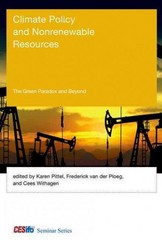Tena koutou katoa, welcome all. Recent data for the New Zealand economy suggest demand is robust and the economic recovery has broadened, despite some weakness persisting in The Monetary Policy Committee agreed to retain the sectors most exposed to international tourism. the current stimulatory level of monetary settings, Household spending and construction activity are keeping the Official Cash Rate (OCR) at 0.25 per cent at high levels and continue to grow, and business for now. Today's decision was made in the context of the Government's imposition of Level 4 COVID investment is responding to increased demand. restrictions on activity across New Zealand. Capacity pressures are now evident in the economy, particularly in the labour market where job The Committee will assess the inflation and vacancies remain high despite the recent decline in employment outlook on an ongoing basis, with a unemployment and underemployment. Wages are view to continue to reduce the level of monetary rising consistent with the tight labour market conditions. stimulus over time so as to best meet their policy remit. This follows the recent halting of additional Broader inflation pressures are being accentuated government bond purchases under the Large Scale in the near term by one-off price rises such as higher Asset Purchase (LSAP) programme in July. oil prices, and temporary factors such as supply shortfalls and higher transport costs. Near-term Global monetary and fiscal settings remain at consumer price inflation is expected to rise above the accommodation levels, supporting international Committee's target range before returning towards spending and investment. Rising vaccination rates the 2 percent midpoint around mid-2022. across many countries have provided economic impetus. The rise in activity has continued to support The Committee agreed they are confident of meeting demand and prices for New Zealand's export their inflation and employment remit with less need commodities. for the existing level of monetary stimulus. However, the Committee remains alert to the supply disruptions However, the need to reinstate COVID-19 that COVID-19 can create, and the dampening effect containment measures in some regions highlights the this can have on confidence. House prices are also serious health and economic risks posed by the virus. above their sustainable level, heightening the risk of Persistent and elevated health risks are promoting a price correction as supply increases. ongoing global supply chain disruptions, and are acting to constrain productive capacity and prolong The Committee agreed that their least regrets policy inflationary pressures. Today's re-introduction of stance is to further reduce the level of monetary Level 4 restrictions to activity across New Zealand is stimulus so as to anchor inflation expectations and a stark example of how unpredictable and disruptive continue to contribute to maximum sustainable the virus is proving to be. employment. They agreed, however, to keep the OCR unchanged at this meeting given the heightened The Committee noted that the New Zealand uncertainty with the country in a lockdown. economy had rebounded more strongly than most countries, with less domestic disruption caused by Meitaki, thanks. COVID-19 to date. Employment is currently at or above its maximum sustainable level, and consumer price inflation expectations remain anchored near 2 percent, the midpoint of the target range. Adrian Orr Governor







